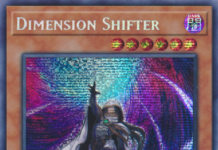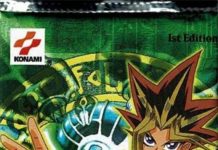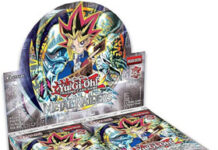I’ve been struggling to figure out how to approach writing about card value in Goat Format because of how variable it is. Every turn of every duel of every match has variables that you cannot possibly account for. Everyone plays a bit differently, every turn is different. Since all of these affect the value of the cards in your hand, you have to be able to follow plays to their logical conclusions to determine how valuable your cards are. And that doesn’t even take into account mind games and bluffs and things like that.
I think the best way to approach card value is to simply use a real-world example. During a friendly mirror match against a friend the other night, we spend a good hour and a half or so simply discussing a first-turn play he made and how it could have been better. I’m going to do the same in this article.
Card Value in Goat Format: Analyzing an Opening Turn
The Setup
My buddy’s opening hand, going first, was this:
Magician of Faith
Metamorphosis
Call of the Haunted
Jinzo
Tsukuyomi
Airknight Parshath
The Play
Set Tsukuyomi, set Metamorphosis, pass turn.
Card Value in Goat Format: Analyzing the Play
First Impressions
Okay, I get that it isn’t the best hand. Opening two tributes sucks. But from a card value standpoint it could be worse. Maybe not a lot worse, but immediately I see some options. Let’s talk about some of them:
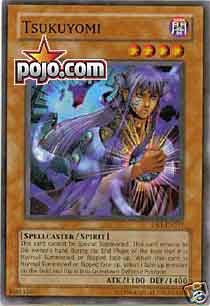 Possible play #1: Set Tsukuyomi alone
Possible play #1: Set Tsukuyomi alone
One could argue that setting Tsukuyomi is a good play because it covers your bases. If your opponent plays passive, that Tsukuyomi gives you access to Airknight or Jinzo. If they play aggressive, you protect your LP. But with that hand, Tsukuyomi is the only card you can really be aggressive with, and it’s a reactive card by design. As such, I feel like setting Tsukuyomi cuts you off from options in later turns. Considering the cards in hand, you really have to maximize their value lest you get stuck with useless cards in hand. This is why I don’t like simply setting Tsukuyomi.
Possible play #2: Set Magician of Faith alone
The best case scenario with this play is that your opponent plays passive and lets your Magician of Faith survive. The idea with this play is to use Faith as tribute fodder for Thousand-Eyes Restrict so you can take their monster and then sacrifice Thousand-Eyes for Jinzo.
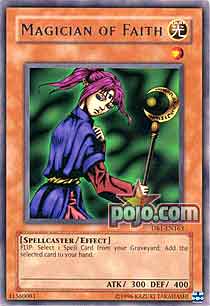 Which, I mean, okay, that’s not terrible, I suppose. It preempts your opponent’s backrow, but it also costs Faith and Meta and Thousand-Eyes just to drop Jinzo. Note too that Jinzo is vulnerable to Snatch Steal and a variety of other outs and it also shuts down your own Call of the Haunted. And worst-case scenario if this does go off is that you attack straight into a Scapegoat.
Which, I mean, okay, that’s not terrible, I suppose. It preempts your opponent’s backrow, but it also costs Faith and Meta and Thousand-Eyes just to drop Jinzo. Note too that Jinzo is vulnerable to Snatch Steal and a variety of other outs and it also shuts down your own Call of the Haunted. And worst-case scenario if this does go off is that you attack straight into a Scapegoat.
And then you could argue that if they do make a Thousand-Eyes to suck up Jinzo, you have Tsukuyomi to kill it and Call to bring back Jinzo. Which is alright, but you’re still going to end up taking 2400 damage to the face, which puts you closer to the red zone in regards to your LP. Giving your opponent free damage is okay in the early game, but big chunks like that can easily result in runaway scenarios, and that can actually reduce the value of your cards, notably things like Ring of Destruction, Premature Burial and Delinquent Duo.
Isn’t card value theory fun?
Possible play #3: Set Metamorphosis alone, or with Tsukuyomi or Magician of Faith
Metamorphosis is the best card in the hand, why risk it to a Breaker or a Mystical Space Typhoon? You could argue that you could get it back with Magician of Faith, but I don’t like it for several reasons. A) If your opponent has Nobleman of Crossout there goes your strategy; B) if they play aggressive you have to play Call of the Haunted to get your Faith back, which minimizes its value; C) you have no followups to making TER that early.
With the only Spell in hand to reuse with Magician of Faith being Metamorphosis, I’d rather get more value out of her via Thousand-Eyes Restrict. I don’t want to lose her to a Nobleman of Crossout or any aggressive monster because there goes my board presence.
Possible play #4: Make Thousand-Eyes Restrict, set Call of the Haunted
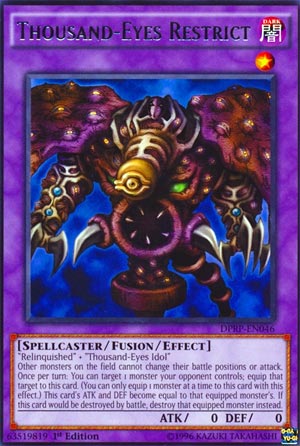 I really, really, really don’t like this play, but you can do it, and it does make a bit of sense. By making a Thousand-Eyes Restrict you’re forcing your opponent to react to an aggressive monster while also making your Call of the Haunted live immediately.
I really, really, really don’t like this play, but you can do it, and it does make a bit of sense. By making a Thousand-Eyes Restrict you’re forcing your opponent to react to an aggressive monster while also making your Call of the Haunted live immediately.
This also preempts your opponent’s use of Breaker the Magical Warrior since he can’t attack with Thousand-Eyes face-up on the field. This play, though, is a serious glass cannon; there are multiple ways to out it and it relies heavily on Call for a Magician of Faith to make a Jinzo or Airknight. Because you just know they’re going to do what they can to out that Thousand-Eyes Restrict; they can’t really commit to the board with it. Worst-case scenario is Tsukuyomi and Mystical Space Typhoon; this leaves you with no tribute options, no cards on board, two tributes and a Tsukuyomi in hand with nothing to really do with it. There’s no follow-up if your board gets broken, and that’s a problem.
Possible play #5: Pass
From a card value standpoint I feel this is the best play.
The only real risk here is Don Zaloog or Spirit Reaper. But since I knew that my buddy played neither of those cards they weren’t threats. I will say that if you feel Spirit Reaper may be a threat you can set Tsuk to prevent losing a card. The same card value arguments I made above are still valid I think, but Reaper is a risk that some people don’t want to take.
Personally, with two tributes and Call of the Haunted in hand, I feel it’s worth the risk to let them discard a card, but some people may not be comfortable with those odds, especially with Metamorphosis in hand.
The best play explained
Committing any of those cards turn one is going to cost you card value. There are too many variables and too many ways to break your setup. By simply passing, you force your opponent to commit to the board first. If they go aggressive, you have Thousand-Eyes Restrict to level the playing field. If they go passive, you can simply wait and draw into more cards and more options.
Either way, you’re protecting yourself from your opponent, and by being passive you’re better able to use your cards when they’re going to make the biggest impact. You’re increasing their value by not playing them.
Like I said, the only real risk is a Reaper, a Don Zaloog, or a serious explosion of cards to try to OTK. But all of those are pretty rare, and if you know Reaper or Don aren’t a threat passing will get you the most out of your cards on subsequent turns. This is what you’re trying to accomplish – that’s your goal. You want to get the most out of your cards over the course of not just one turn, but multiple turns.
Using card value in Goat Format as a threat
Something to keep in mind with this type of hand is that passive play can actually threaten your opponent. You’re saying to them “I want you to do something,” which can telegraph to them that they should probably play passively. You can use that to your advantage. More importantly, it’ll trap aggressive players and often cost them cards, since you’re using their plays to further your own.
I’m not personally a fan of having to rely on the opponent doing something. But sometimes it’s your only option. And if that’s the case, you can use it to your advantage by maximizing your card value and doing more with less.
More importantly, if they’re playing passively because they understand you’re waiting for them to do something, you’re still putting pressure on your opponent because you’re drawing cards. Remember, every card you draw is going to give you potential options. Those options could allow you to be aggressive, they could give you further ways to retaliate if your opponent gets aggressive, they could increase the value of the cards you already have, etc.
Basically, you want to force your opponent to commit more than one card for every one of yours. This is how you win the numbers game. If you commit two cards to a play, you want your opponent to spend two or more cards countering it. This isn’t always going to work – sometimes it’s a one-for-one grind until someone has to spend two to out one. But on the whole that’s what you’re trying to accomplish. When it comes to card value in Goat Format, you have to maximize the value of every card in your hand at every point of every turn.

